Info
Subfamily: Chloridoideae
Genus etymology: Sporobolus = "seed thrower" referring to the seed being ejected from the pericarp
Species etymology: virginicus = from Virigina, USA
Photosynthetic type: C4 (warm season)
Nativity: indigenous
Map
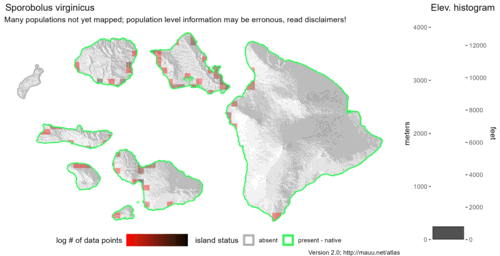

Inflorescence


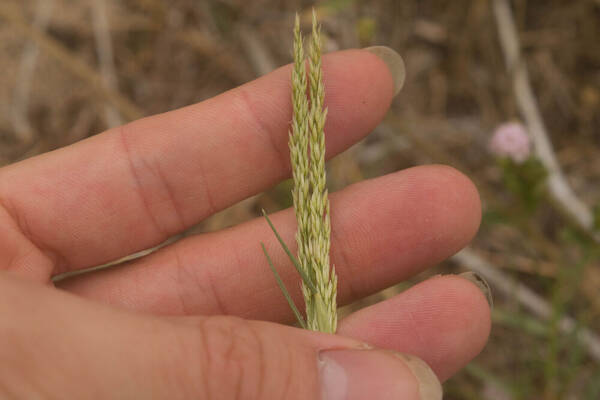
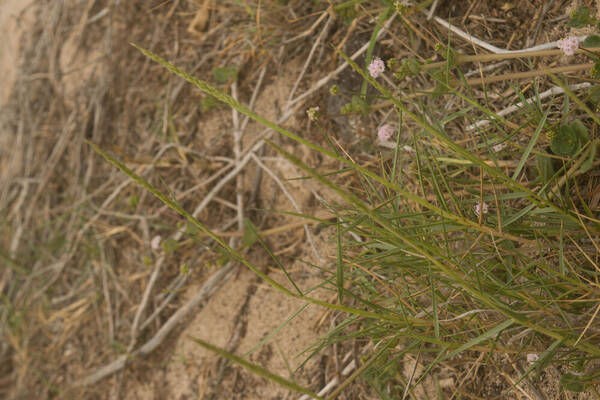
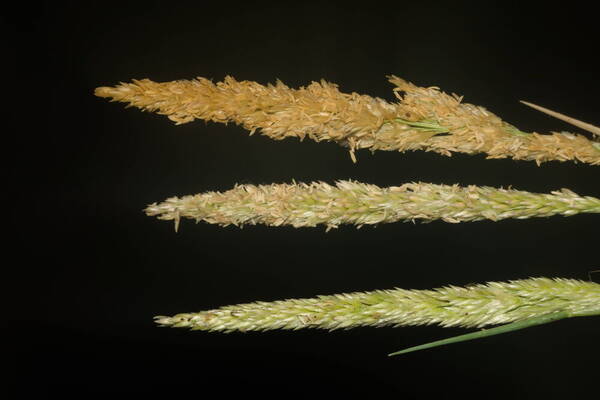
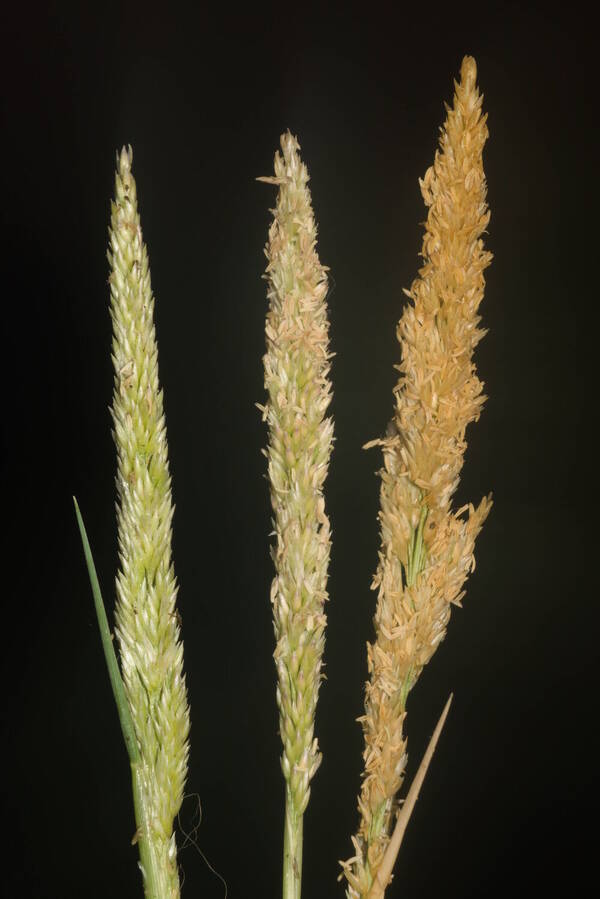
Plant
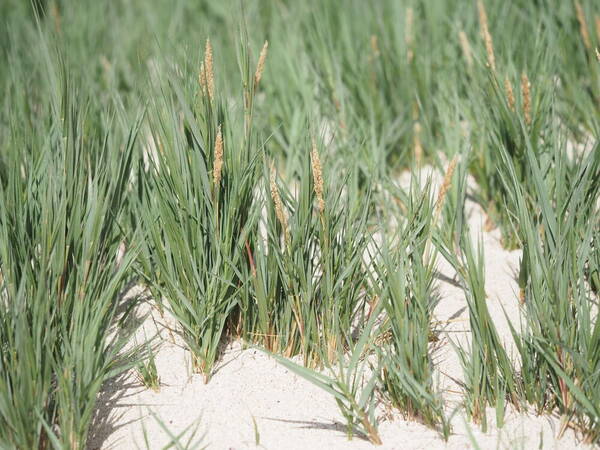
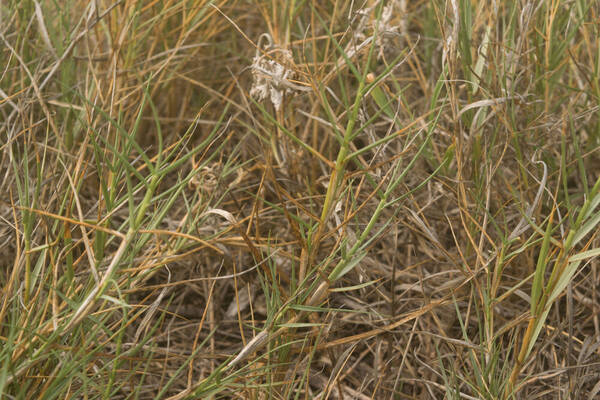
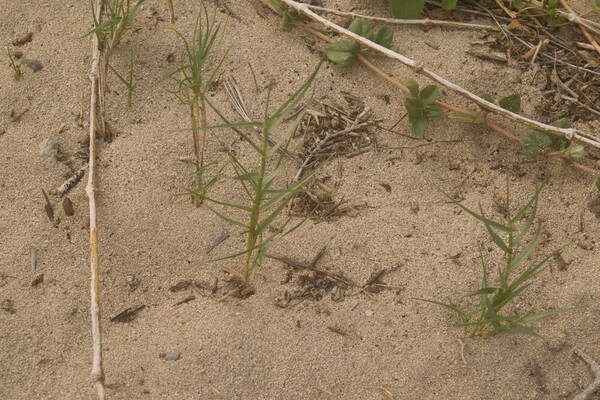
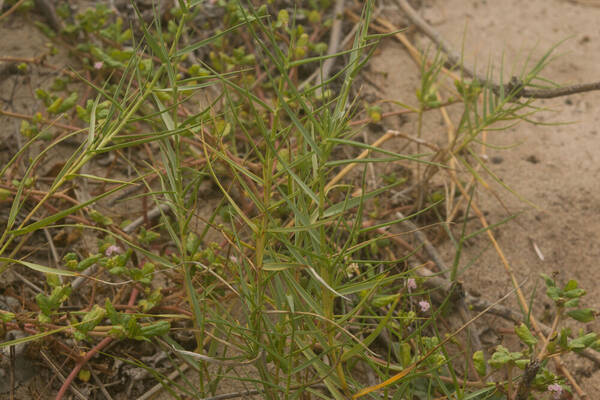
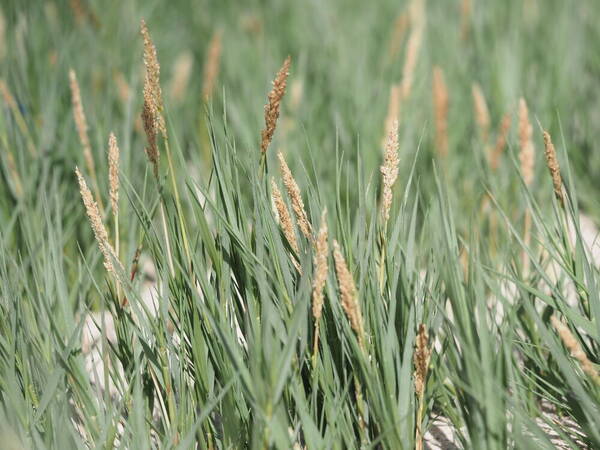
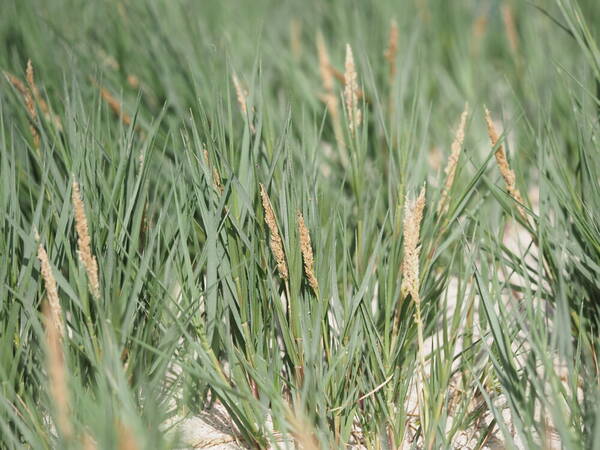
Spikelets
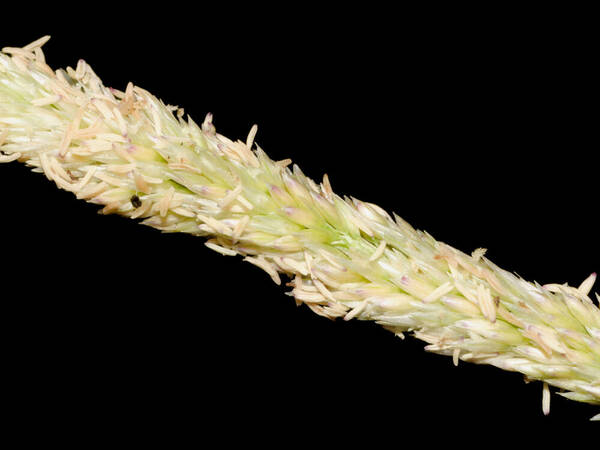
Landscape

Description
Plants perennial; rhizomatous, stoloniferous. Culms 10-65 cm, erect to decumbent. Sheaths overlapping, margins ciliate, apices with tufts of hairs, hairs to 2 mm; ligules 0.1-0.4 mm; blades usually conspicuously distichous, 4-16 cm long, 2-5 mm wide, flat to loosely involute, glabrous abaxially, scabridulous adaxially, margins scabridulous. Panicles 3-10 cm long, 0.4-1.6 cm wide, contracted, spikelike, dense; primary branches 0.5-2 cm, appressed, spikelet-bearing to the base; pedicels 0.2-1.4 mm, appressed. Spikelets (1.8)2-3.2 mm, yellowish-white to purplish-tinged, sometimes grayish. Glumes subequal, ovate-oblong, membranous; lower glumes 1.5-2.4 mm; upper glumes 1.8-3(3.2) mm; lemmas 2.1-3 mm, ovate to lanceolate, membranous, glabrous, acute; paleas 2.1-3 mm, ovate, membranous; anthers 3, 1-1.7 mm, yellowish. Fruits not known. 2n = 20, 30.
(Description source: Barkworth, M.E., Capels, K.M., Long, S. & Piep, M.B. (eds.) 2003. Flora of North America, north of Mexico. Volume 25. Magnoliophyta: Commelinidae (in part): Poaceae, Part 2. Oxford University Press, New York. 783 pp. http://floranorthamerica.org/Sporobolus_virginicus )
Vigorous perennials, spreading by extensive stiff, scaly rhizomes; culms erect, 0.5- 5(-9) dm long, freely branching, hollow, glabrous. Sheaths overlapping, glabrous except for the pilose apex and upper margins, hairs conspicuous, up to 3 mm long; ligule membranous, 0.2-0.4 mm long, minutely, densely ciliate; blades harsh, usually involute, 3-14 cm long, 2-5 mm wide, upper surface ridged, sometimes with scattered papillose hairs, apex acute, pungent. Panicles terminal, dense, cylindrical, 2-9 cm long, 0.3-1 cm in diameter, the branches short, erect, densely flowered to base; spikelets grayish or yellowish brown, glossy, appressed to the branches, laterally compressed, 2-3.3 mm long; first glume lanceolate, 1.7-2.4 mm long, 1-nerved, apex acuminate, second glume ovate, 2-3.1 mm long, l1-nerved, apex acuminate; lemma ovate, 1.9-2.5 mm long, 1-nerved; palea as long as lemma, often splitting between the 2 nerves. Fruit obovoid, 0.9- 1.2 mm long, ovary wall gelatinizing but thin. [2n = 18, 20, 30, 40.]
(Description source: O’Connor, P.J. 1990. Poaceae, pp. 1481–1604. In: Wagner W.L., Herbst D.R. & Sohmer S.H. (eds.)., Manual of the flowering plant of Hawaiʻi. Vol. 2. University of Hawaii Press & Bishop Museum Press, Honolulu )